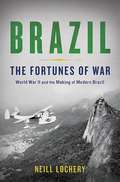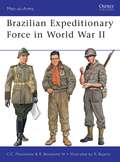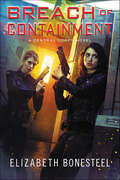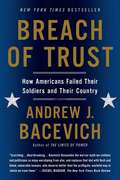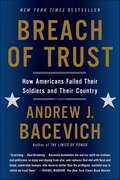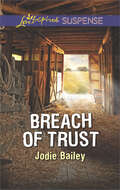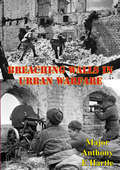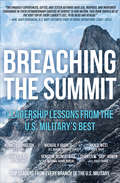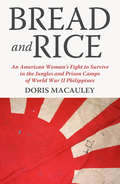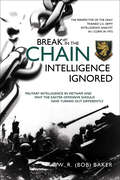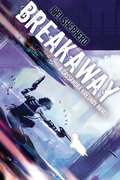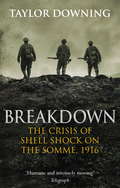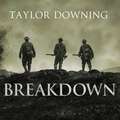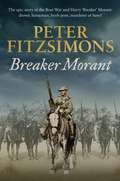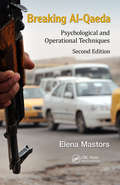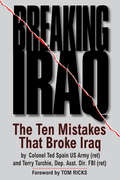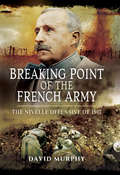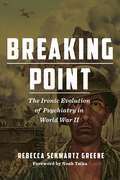- Table View
- List View
Brazil: The Fortunes of War
by Neill LocheryIn 1939, Brazil seemed a world away from the chaos overtaking Europe. Yet despite its bucolic reputation as a distant land of palm trees and pristine beaches, Brazil's natural resources and proximity to the United States made it strategically invaluable to both the Allies and the Axis alike. As acclaimed historian Neill Lochery reveals in The Fortunes of War, Brazil's wily dictator Getúlio Dornelles Vargas keenly understood his country's importance, and played both sides of the escalating global conflict off against each other, gaining trade concessions, weapons shipments, and immense political power in the process. Vargas ultimately sided with the Allies and sent troops to the European theater, but not before his dexterous geopolitical machinations had transformed Rio de Janeiro into one of South America's most powerful cities and solidified Brazil's place as a major regional superpower.A fast-paced tale of diplomatic intrigue, The Fortunes of War reveals how World War II transformed Brazil from a tropical backwater into a modern, global power.
Brazilian Expeditionary Force in World War II
by Ramiro Bujeiro Cesar MaximianoIn the English-speaking world, it is generally unknown that a volunteer Brazilian Expeditionary Force (FEB) fought alongside the US Army in Italy from mid-1944 until the end of the war. This was in effect a light infantry division, consisting of three infantry regiments augmented with artillery and light armour. It was supported by a Brazilian Air Force contingent of a light reconnaissance squadron as well as a P-47 Thunderbolt-equipped fighter squadron. Although all weapons, uniform, kit and equipment were either American-supplied or American models, there were distinctive Brazilian adaptations to uniforms and other key pieces of kit. This is a seriously researched volume on a little-studied subject matter complete with a range of previously unpublished photographs and specially commissioned artwork plates.
Breach of Containment: A Central Corps Novel
by Elizabeth BonesteelA reluctant hero must prevent war in space and on Earth in this fast-paced military science fiction thriller from the author of The Cold Between and Remnants of Trust—a page-turning hybrid combining the gritty, high-octane thrills of James S. A. Corey and the sociopolitical drama of Ann Leckie.Space is full of the unknown . . . most of it ready to kill you.When hostilities between factions threaten to explode into a shooting war on the moon of Yakutsk, the two major galactic military powers, Central Corps and PSI, send ships to defuse the situation. But when a strange artifact is discovered, events are set in motion that threaten the entire colonized galaxy—including former Central Corps Commander Elena Shaw.Now an engineer on a commercial shipping vessel, Elena finds herself drawn into the conflict when she picks up the artifact on Yakutsk—and investigation of it uncovers ties to the massive, corrupt corporation Ellis Systems, whom she’s opposed before. Her safety is further compromised by her former ties to Central Corps—Elena can’t separate herself from her past life and her old ship, the CCSS Galileo.Before Elena can pursue the artifact’s purpose further, disaster strikes: all communication with the First Sector—including Earth—is lost. The reason becomes apparent when news reaches Elena of a battle fleet, intent on destruction, rapidly approaching Earth. And with communications at sublight levels, there is no way to warn the planet in time.Armed with crucial intel from a shadowy source and the strange artifact, Elena may be the only one who can stop the fleet, and Ellis, and save Earth. But for this mission there will be no second chances—and no return.
Breach of Trust: How Americans Failed Their Soldiers and Their Country
by Andrew BacevichThe United States has been "at war" in Iraq and Afghanistan for more than a decade. Yet as war has become normalized, a yawning gap has opened between America's soldiers and veterans and the society in whose name they fight. For ordinary citizens, as former secretary of defense Robert Gates has acknowledged, armed conflict has become an "abstraction" and military service "something for other people to do." <p><p> In Breach of Trust, bestselling author Andrew J. Bacevich takes stock of the separation between Americans and their military, tracing its origins to the Vietnam era and exploring its pernicious implications: a nation with an abiding appetite for war waged at enormous expense by a standing army demonstrably unable to achieve victory. Among the collateral casualties are values once considered central to democratic practice, including the principle that responsibility for defending the country should rest with its citizens. <p> Citing figures as diverse as the martyr-theologian Dietrich Bonhoeffer and the marine-turned-anti-warrior Smedley Butler, Breach of Trust summons Americans to restore that principle. Rather than something for "other people" to do, national defense should become the business of "we the people." Should Americans refuse to shoulder this responsibility, Bacevich warns, the prospect of endless war, waged by a "foreign legion" of professionals and contractor-mercenaries, beckons. So too does bankruptcy―moral as well as fiscal.
Breach of Trust: How Americans Failed Their Soldiers and Their Country (The American Empire Project)
by Andrew J. BacevichA blistering critique of the gulf between America's soldiers and the society that sends them off to war, from the bestselling author of The Limits of Power and Washington RulesThe United States has been "at war" in Iraq and Afghanistan for more than a decade. Yet as war has become normalized, a yawning gap has opened between America's soldiers and veterans and the society in whose name they fight. For ordinary citizens, as former secretary of defense Robert Gates has acknowledged, armed conflict has become an "abstraction" and military service "something for other people to do."In Breach of Trust, bestselling author Andrew J. Bacevich takes stock of the separation between Americans and their military, tracing its origins to the Vietnam era and exploring its pernicious implications: a nation with an abiding appetite for war waged at enormous expense by a standing army demonstrably unable to achieve victory. Among the collateral casualties are values once considered central to democratic practice, including the principle that responsibility for defending the country should rest with its citizens.Citing figures as diverse as the martyr-theologian Dietrich Bonhoeffer and the marine-turned-anti-warrior Smedley Butler, Breach of Trust summons Americans to restore that principle. Rather than something for "other people" to do, national defense should become the business of "we the people." Should Americans refuse to shoulder this responsibility, Bacevich warns, the prospect of endless war, waged by a "foreign legion" of professionals and contractor-mercenaries, beckons. So too does bankruptcy—moral as well as fiscal.
Breach of Trust: Search And Rescue Plain Truth Breach Of Trust
by Jodie BaileyA veteran teams up with the lover she thought was dead to stop a dangerous hacker in this inspirational romantic suspense adventure.Meghan McGuire’s ready to put her military career behind her and start her dream job helping troubled children—until a man from her past reappears. Tate Walker is supposed to be dead. But now he’s standing on her doorstep, telling her she’s in danger.Tate never thought he’d see Meghan again . . . and certainly not as the target of the hacker he’s trying to bust. With both of their lives in danger, they must work together to hunt down the criminal. But when Tate learns about the past Meghan’s been hiding, he’s not sure if she’s still the woman he once loved. Or if he can trust her with his survival—and his heart.
Breaching Walls In Urban Warfare
by Major Anthony E. HartleThe process of urbanization throughout the world is making urban warfare a major aspect of future military conflicts. Past experience in such combat indicates that wall breaching is an important capability in facilitating the movement of ground units. Maneuver in strongly defended built-up areas is sometimes possible only if units move through buildings.This study attempts to determine if there is a need for a wall-breaching capability in infantry units today. The investigation is focused on an analysis of historical experience, contemporary urban areas, and the capabilities of U.S. Army weapons.Investigation reveals that a distinct need for a wall-breaching capability in infantry units does exist, and that current weapons and equipment readily available to the infantry rifle company are inadequate for this purpose. Further examination reveals that the means of satisfying the requirement are within the capability of current technology.
Breaching the Fortress Wall: Understanding Terrorist Efforts to Overcome Defensive Technologies
by Peter Chalk Kim Cragin Brian A. Jackson John V. Parachini Bruce Newsome R. Kim CraginTechnology systems play a key role within a larger, integrated strategy to target groups' efforts and protect the public from the threat of terrorist violence. This study draws on relevant data from the history of a variety of terrorist conflicts to understand terrorists' counter-technology efforts. Fully exploring adversaries' counter-technology behaviors can help make the best choices to protect from the nation from the threat of terrorism.
Breaching the Summit: Leadership Lessons from the U.S. Military's Best
by Kenneth O. Preston Michael P. Barrett Rick D. West James A. Roy Denise M. Jelinski-Hill Charles BowenThis unique anthology collects personal stories and leadership lessons from six highly-ranked officers across all branches of service. In Breaching the Summit, six senior enlisted advisors to the joint chiefs of staff share their stories, experiences, and lessons learned from a lifetime of military service. In their own words, each tells how they got their start, how mentors encouraged them along the way, and how they eventually became the highest-ranking enlisted member in their respective services. Their personal stories illustrate battle-tested principles of successful leadership that are applicable in all walks of life. The authors include Ken Preston, 13th Sergeant Major of the Army (retired); Mike Barrett, 17th Sergeant Major of the Marine Corps (retired); Rick West, 12th Master Chief Petty Officer of the Navy (retired); James Roy, 16th Chief Master Sergeant of the Air Force (retired); Denise Jelinski-Hall, Senior Enlisted Advisor to the National Guard Bureau (retired); and Skip Bowen, 10th Master Chief Petty Officer of the Coast Guard (retired). &“Books on leadership are many, but none are as practical, clear, and proven as Breaching the Summit.&” —Adm. Gary Roughead, US Navy (retired)
Bread and Rice: An American Woman's Fight To Survive In The Jungles And Prison Camps Of The Wwii Philippines
by Carlos P. Romulo Doris MacauleyBread and Rice, first published in 1947, is the moving war-time account by Doris Macauley (aka Doris Rubens) of her life on the run in the Philippines and her eventual capture and imprisonment by the Japanese. For a year and a half, her and her husband lived in the mountains and jungles of Luzon, hiding with reclusive mountain tribes who sheltered and helped them in their daily struggle to survive. Due to ever-roving Japanese patrols, they were forced to move constantly to avoid discovery—spending a week here, a month there. When they were finally captured, they were first kept in horrific Japanese prisons before being transferred to the internment camp at Santo Tomas, and, later, Los Banos. The descriptions of hardship and the will-to-survive portrayed in Bread and Rice are a timeless story of individual courage and inspiration.
Break in the Chain—Intelligence Ignored: Military Intelligence in Vietnam and Why the Easter Offensive Should Have Turned out Differently
by W. R. BakerA riveting combination of war memoir and unique examination of the role of intelligence during the Easter Offensive 1972 written by an intelligence analyst who was there in 1972. For the first two weeks of the Easter Offensive of 1972, the 571st Military Intelligence Detachment provided the only pertinent collateral intelligence available to American forces. Twice daily, the Detachment provided intelligence to the USS Buchanan (DDG-14), US Navy SEALS, and Special Forces units including tactical and strategic forecasts of enemy movements, information that was otherwise unavailable to U.S. units and advisors in-country. In the weeks before the offensive, vital agent reports and verbal warnings by the 571st MI Detachment had been ignored by all the major commands; they were only heeded, and then only very reluctantly, once the Offensive began. This refusal to listen to the intelligence explains why no Army or USMC organizations were on-call to recover prisoners discovered or U.S. personnel downed behind enemy lines, as in the BAT-21 incident, as the last two Combat Recon Platoons in Vietnam had been disbanded six weeks before the offensive began. The lessons and experiences of Operation Lam Son 719 in the previous year were ignored, especially with regard to the NVA’s tactical use of tanks and artillery. In his memoir, Bob Baker, the only trained military intelligence analyst with the 571st MI Detachment in 1972, reveals these and other heroics and blunders during a key moment in the Vietnam War.
Breakaway: A Cassandra Kresnov Novel (Cassandra Kresnov #2)
by Joel ShepherdCassandra Kresnov is a highly advanced hunter-killer android. She has escaped the League and fled to Callay, a member of the Federation. Because of her fighting skills she was able to save the president's life and is now a trusted member of the security forces. However, not all Tanushans are happy to have her on their turf and Cassandra has to tread carefully. As Callay moves towards a vote on whether to break away from the Federation, confusion reigns and terrorist groups plot their own agendas. Cassandra becomes involved with two young troubleshooters for the secret service and finds out more than she ever wanted to know about the Tanushan underground and those on the fringes. Furthermore, there is a delegation from the League in Tanusha, and Cassandra is not sure that they won't try to take her back. Breakaway is a great story with a cracking plot and strong characters. At its heart is the enigma of Cassandra: Is she more human than human, or is she totally untrustworthy?
Breakdown: How America's Intelligence Failures Led to September 11
by Bill GertzBook about our intelligence failures and waste
Breakdown: The Crisis of Shell Shock on the Somme
by Taylor DowningParalysis. Stuttering. The 'shakes'. Inability to stand or walk. Temporary blindness or deafness.When strange symptoms like these began appearing in men at Casualty Clearing Stations in 1915, a debate began in army and medical circles as to what it was, what had caused it and what could be done to cure it. But the numbers were never large.Then in July 1916 with the start of the Somme battle the incidence of shell shock rocketed. The high command of the British army began to panic. An increasingly large number of men seemed to have simply lost the will to fight. As entire battalions had to be withdrawn from the front, commanders and military doctors desperately tried to come up with explanations as to what was going wrong. 'Shell shock' - what we would now refer to as battle trauma - was sweeping the Western Front.By the beginning of August 1916, nearly 200,000 British soldiers had been killed or wounded during the first month of fighting along the Somme. Another 300,000 would be lost before the battle was over. But the army always said it could not calculate the exact number of those suffering from shell shock. Re-assessing the official casualty figures, Taylor Downing for the first time comes up with an accurate estimate of the total numbers who were taken out of action by psychological wounds. It is a shocking figure.Taylor Downing's revelatory new book follows units and individuals from signing up to the Pals Battalions of 1914, through to the horrors of their experiences on the Somme which led to the shell shock that, unrelated to weakness or cowardice, left the men unable to continue fighting. He shines a light on the official - and brutal - response to the epidemic, even against those officers and doctors who looked on it sympathetically. It was, they believed, a form of hysteria. It was contagious. And it had to be stopped.Breakdown brings an entirely new perspective to bear on one of the iconic battles of the First World War.
Breakdown: The Crisis of Shell Shock on the Somme
by Taylor DowningParalysis. Stuttering. The 'shakes'. Inability to stand or walk. Temporary blindness or deafness.When strange symptoms like these began appearing in men at Casualty Clearing Stations in 1915, a debate began in army and medical circles as to what it was, what had caused it and what could be done to cure it. But the numbers were never large.Then in July 1916 with the start of the Somme battle the incidence of shell shock rocketed. The high command of the British army began to panic. An increasingly large number of men seemed to have simply lost the will to fight. As entire battalions had to be withdrawn from the front, commanders and military doctors desperately tried to come up with explanations as to what was going wrong. 'Shell shock' - what we would now refer to as battle trauma - was sweeping the Western Front.By the beginning of August 1916, nearly 200,000 British soldiers had been killed or wounded during the first month of fighting along the Somme. Another 300,000 would be lost before the battle was over. But the army always said it could not calculate the exact number of those suffering from shell shock. Re-assessing the official casualty figures, Taylor Downing for the first time comes up with an accurate estimate of the total numbers who were taken out of action by psychological wounds. It is a shocking figure.Taylor Downing's revelatory new book follows units and individuals from signing up to the Pals Battalions of 1914, through to the horrors of their experiences on the Somme which led to the shell shock that, unrelated to weakness or cowardice, left the men unable to continue fighting. He shines a light on the official - and brutal - response to the epidemic, even against those officers and doctors who looked on it sympathetically. It was, they believed, a form of hysteria. It was contagious. And it had to be stopped.Breakdown brings an entirely new perspective to bear on one of the iconic battles of the First World War.
Breakdown: The Crisis of Shell Shock on the Somme
by Taylor DowningParalysis. Stuttering. The 'shakes'. Inability to stand or walk. Temporary blindness or deafness.When strange symptoms like these began appearing in men at Casualty Clearing Stations in 1915, a debate began in army and medical circles as to what it was, what had caused it and what could be done to cure it. But the numbers were never large.Then in July 1916 with the start of the Somme battle the incidence of shell shock rocketed. The high command of the British army began to panic. An increasingly large number of men seemed to have simply lost the will to fight. As entire battalions had to be withdrawn from the front, commanders and military doctors desperately tried to come up with explanations as to what was going wrong. 'Shell shock' - what we would now refer to as battle trauma - was sweeping the Western Front.By the beginning of August 1916, nearly 200,000 British soldiers had been killed or wounded during the first month of fighting along the Somme. Another 300,000 would be lost before the battle was over. But the army always said it could not calculate the exact number of those suffering from shell shock. Re-assessing the official casualty figures, Taylor Downing for the first time comes up with an accurate estimate of the total numbers who were taken out of action by psychological wounds. It is a shocking figure.Taylor Downing's revelatory new book follows units and individuals from signing up to the Pals Battalions of 1914, through to the horrors of their experiences on the Somme which led to the shell shock that, unrelated to weakness or cowardice, left the men unable to continue fighting. He shines a light on the official - and brutal - response to the epidemic, even against those officers and doctors who looked on it sympathetically. It was, they believed, a form of hysteria. It was contagious. And it had to be stopped.Breakdown brings an entirely new perspective to bear on one of the iconic battles of the First World War.
Breaker Morant
by Peter FitzSimonsThe epic story of the Boer War and Harry 'Breaker' Morant: drover, horseman, bush poet - murderer or hero?Most Australians have heard of the Boer War and of Harry 'Breaker' Morant, a figure who rivals Ned Kelly as an archetypal Australian folk hero. But Morant was a complicated man. Born in England and immigrating to Queensland in 1883, he established a reputation as a rider, polo player and poet who submitted ballads to The Bulletin and counted Banjo Paterson as a friend. Travelling on his wits and the goodwill of others, Morant was quick to act when appeals were made for horsemen to serve in the war in South Africa. He joined up, first with the South Australian Mounted Rifles and then with a South African irregular unit, the Bushveldt Carbineers.The adventure would not go as Breaker planned. In October 1901 Lieutenant Harry Morant and two other Australians, Lieutenants Peter Handcock and George Witton, were arrested for the murder of Boer prisoners. Morant and Handcock were court-martialled and executed in February 1902 as the Boer War was in its closing stages, but the debate over their convictions continues to this day.With his masterful command of story, Peter FitzSimons takes us to the harsh landscape of southern Africa and into the bloody action of war against an unpredictable force using modern commando tactics. The truths FitzSimons uncovers about 'the Breaker' and the part he played in the Boer War are astonishing - and finally we will know if the Breaker was a hero, a cad, a scapegoat or a criminal.
Breakfast in the Ruins and Other Stories: The Best Short Fiction Of Michael Moorcock Volume 3
by Michael MoorcockThe third and final part of Gollancz's definitive collection of Moorcock's short fiction, this selection features some of his finest work. From 'The Time Dweller' to 'Breakfast in the Ruins', the stories here are incredibly varied in their style, execution and subject matter.The stories included in this collection are:Breakfast in the RuinsThe Time DwellerEscape from EveningA Dead SingerLondon FleshBehold the Man
Breakheart Pass
by Alistair MacLeanStraight from the Old West, and the breathless imagination of today's top creator of suspense, comes this bold, non-stop tale of a trainload of terror--and of one man pitted against an army of corruption. The Rocky Mountains, winter 1873... One of the most desolate stretches of railroad in the west. Travelling along it is a crowded troop train, bound for the cholera-stricken garrison at Fort Humboldt. On board are the Governor of Nevada, the daughter of the fort's commander and a US marshal escorting a notorious outlaw. Between them and safety are the hostile Paiute Indians--and a man who will stop at nothing, not even murder...
Breaking Al-Qaeda: Psychological and Operational Techniques, Second Edition
by Elena Mastors Sing-Ping Chiew Dennis AngBreaking Al-Qaeda: Psychological and Operational Techniques, Second Edition explores the background and history of al-Qaeda, covers recent developments, and explains how, why, and where the al-Qaeda network is expanding. Despite the death of Osama bin Laden, the al-Qaeda network he inspired is still alive, and in some places, thriving. This book covers the background and history of al-Qaeda, developments in recent years, and how and where al-Qaeda is spreading. It examines the current state of the terrorist network and explains what groups in the network are doing to recruit, plan, and carry out attacks worldwide. It also investigates intelligence and counter-terror methods being used to garner information on al-Qaeda.
Breaking Emily's Rules
by Heatherly BellWeren't rules made to be broken...? Play-by-the-rules good girl Emily Parker is finally flying free. Literally. After a broken engagement, she's about to live out her wildest dream: getting her pilot's license. With former Air Force pilot Stone Mcallister teaching her, though, it's not just the altitude making her dizzy.... Once he settles his father's estate, Stone's heading back to the Air Force. When Emily expresses interest in some no-strings fun, he can't resist, but a single kiss proves that a fling won't be enough. As the clock ticks down to his deployment, will he be able to break his own rules for her?
Breaking His Rules: A 2-in-1 Collection
by Lori FosterHis best worst mistake?Morgan byNew York Times bestselling author Lori Foster Sheriff Morgan Hudson wants a wife—one who’s even-tempered and sweet. So why can’t he stop thinking about sexy, spirited Misty Malone? Misty doesn’t intend to stay in Buckhorn anyway—she’s only here to attend her sister’s wedding. Recently fired and keeping a very big secret, she’s not sure where to go next. Until the protective Morgan starts to see Misty in a whole new light…FREE BONUS STORY INCLUDED IN THIS VOLUME!His Accidental Heir byUSA TODAY bestselling author Joanne Rock When resort developer Cameron McNeill goes undercover to root out problems at his prized island property, his first discovery is the irresistible concierge, Maresa Delphine. Her business smarts are vital to his mission. But the struggling single mom could help with his personal mission, too: fulfilling the marriage terms of his grandfather’s will. When he proposes, can Maresa resist his brand of trouble in paradise?
Breaking Iraq: The Ten Mistakes that Broke Iraq
by Ted Spain Terry TurchieThis is an important book, because it gives us the unvarnished account of one brigade commander s tour of duty in Baghdad during the tumultuous first year of the American occupation," writes Tom Ricks in the Foreword. "From it the reader will learn much about what went wrong in Iraq, and also what was wrong with the American military. There, also, are valuable lessons for anyone about command in any war." Ten decisions in Washington and in the battle zone broke Iraq; only cosmetic cement holds it together today. The crack started in Washington and widened early in the battle zones. The authors, who know much about law enforcement and the maintenance of order, identify those decisions. Starting with Defense Secretary Rumsfeld's failure to plan for post-invasion law and order, the appointment of inept generals and political opportunists,the confusion spawned by the cobweb of agreement woven by the Coalition of the Willing to the development of a police force that was slowed by political interference has created an effect that may be longer lasting than any political cement can hold together This is an inside look at how the failure to understand and implement basic fundamentals in creating structure in nation building, can slow the process or even invite failure.
Breaking Point of the French Army: The Nivelle Offensive of 1917
by David MurphyThis historical analysis of the ill-fated Franco-British operation reveals how it nearly spelled defeat for the Triple Entente in WWI. In December of 1916, General Robert Nivelle was appointed Commander-in-Chief of the French armies fighting the Germans on the Western Front. A national hero, he had enjoyed a meteoric rise to high command and public acclaim since the beginning of the Great War. In return, he proclaimed he 'had the formula' that would ensure victory and end the conflict in 1917. But his offensive was a bloody and humiliating failure for France, one that could have opened the way for French defeat. Historian David Murphy presents a penetrating, in-depth analysis of The Nivelle Offensive, demonstrating why it failed and underscoring its importance in the course of the First World War. Murphy describes how the charismatic officer used his charm and intelligence to win the support of French and British politicians, but also how his vanity and braggadocio displayed no sense of operational security. By the opening of the campaign, his plan was an open secret and he had lost the ability to critically assess the operation as it developed. The result was disaster.
Breaking Point: The Ironic Evolution of Psychiatry in World War II (World War II: The Global, Human, and Ethical Dimension)
by Rebecca Schwartz GreeneWINNER, SOCIETY FOR MILITARY HISTORY DISTINGUISHED BOOK AWARDS - FIRST BOOKThis book informs the public for the first time about the impact of American psychiatry on soldiers during World War II.Breaking Point is the first in-depth history of American psychiatry in World War II. Drawn from unpublished primary documents, oral histories, and the author’s personal interviews and correspondence over years with key psychiatric and military policymakers, it begins with Franklin Roosevelt’s endorsement of a universal Selective Service psychiatric examination followed by Army and Navy pre- and post-induction examinations. Ultimately, 2.5 million men and women were rejected or discharged from military service on neuropsychiatric grounds. Never before or since has the United States engaged in such a program.In designing Selective Service Medical Circular No. 1, psychiatrist Harry Stack Sullivan assumed psychiatrists could predict who might break down or falter in military service or even in civilian life thereafter. While many American and European psychiatrists questioned this belief, and huge numbers of American psychiatric casualties soon raised questions about screening’s validity, psychiatric and military leaders persisted in 1942 and 1943 in endorsing ever tougher screening and little else. Soon, families complained of fathers and teens being drafted instead of being identified as psychiatric 4Fs, and Blacks and Native Americans, among others, complained of bias. A frustrated General George S. Patton famously slapped two “malingering” neuropsychiatric patients in Sicily (a sentiment shared by Marshall and Eisenhower, though they favored a tamer style). Yet psychiatric rejections, evacuations, and discharges mounted.While psychiatrist Roy Grinker and a few others treated soldiers close to the front in Tunisia in early 1943, this was the exception. But as demand for manpower soared and psychiatrists finally went to the field and saw that combat itself, not “predisposition,” precipitated breakdown, leading military psychiatrists switched their emphasis from screening to prevention and treatment. But this switch was too little too late and slowed by a year-long series of Inspector General investigations even while numbers of psychiatric casualties soared. Ironically, despite and even partly because of psychiatrists’ wartime performance, plus the emotional toll of war, postwar America soon witnessed a dramatic growth in numbers, popularity, and influence of the profession, culminating in the National Mental Health Act (1946). But veterans with “PTSD,” not recognized until 1980, were largely neglected.
